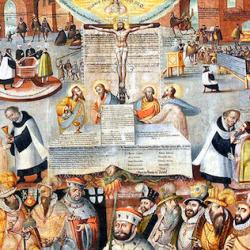The church has not been a static entity, nor has the church’s history been one of smooth organic growth. There are many continuities from Jesus and the apostles to the present, but there have been regular disruptions along the way, disruptions that radically changed the church’s relation to the world and the church’s pattern of life.
For 300 years, the church was an illegal, tenuous, sometimes persecuted sect. Then came Constantine, who legalized and promoted the church, and whose promotion had profound effects on the church’s internal structures and self-understanding.
For the next three hundred years, the Middle East and North Africa were predominantly Christian. Then came Islam.
Between Constantine in the fourth century and the eleventh century, despite tensions and divergences in theology and practice, churches of the East and West were one church. Then came 1054, and we have been living with an East-West divide ever since.
For the next 500 years, the Western church was mostly united, though challenged periodically by reform movements. Then came the Reformation, and the Western church has been divided between Protestant and Catholic, and among Protestants, ever since.
Arguably, we have seen the beginnings of another such disruption in the past century, though with opposite effects: Churches long divided have begun talking to each other, rediscovering commonalities, constructing bridges across the chasms of centuries.
The Constantinian settlement is gone in much of Europe, waning elsewhere. Many of these disruptions have persisted to the present day, but each new disruption has produced tectonic shifts in the church.
Why would we think, then, that the current topography of Christianity is permanent? We have no reason to assume this. We have every reason to assume the opposite, to expect that sometime, somewhere, God will shake and reconfigure the church yet again.
(This is drawn from a lecture on “Protestant and Catholic in Late Modernity,” delivered at Covenant Seminary, St. Louis, March 6, 2015.)















